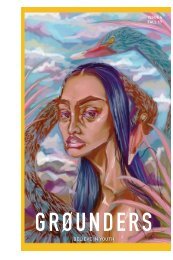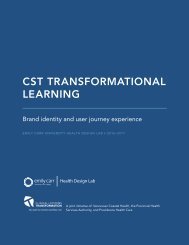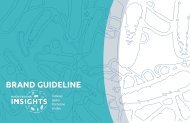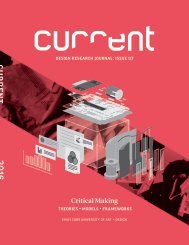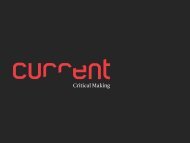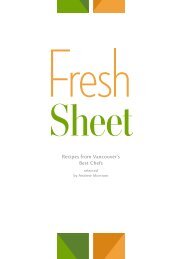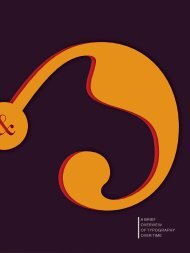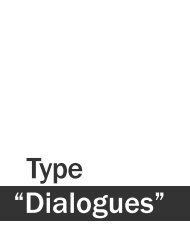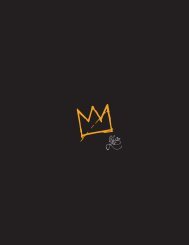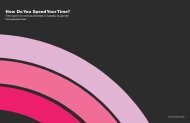Jordan Anthony Process Book
Process book for Melt collective project
Process book for Melt collective project
Create successful ePaper yourself
Turn your PDF publications into a flip-book with our unique Google optimized e-Paper software.
ubc sustainability and sort-it-out campaign analysis<br />
Fig 2<br />
Ripple effect visual device<br />
The ripple effect is a core visual device for UBC sustainability,<br />
intended to help communicate our story in<br />
a simple, creative and inspiring way.<br />
The term ripple effect was coined by educational<br />
theorist Jacob Kounin: “One small change can create<br />
a ripple effect that leads to greater changes with profound<br />
impact.”<br />
In our sustainability efforts at UBC, one small change<br />
can create a ripple that leads to greater changes on<br />
campus, in our local community and, ultimately,<br />
around the world. It speaks to a convergence of ideas<br />
and conceptual integration.<br />
Food Scraps:<br />
Cooked food waste<br />
Raw fruit, vegetables & grains<br />
Bones & egg shells<br />
Dairy products<br />
Paper towels & napkins<br />
Compostable* paper plates<br />
Compostable* food containers<br />
Non-synthetics tea bags<br />
Plain, uncoated wood chopsticks<br />
Keep Out:<br />
Plastic bags & plastic containers**<br />
Biodegradable plastic bags<br />
All plastic cutlery &<br />
plastic chopsticks<br />
Diapers<br />
Dog waste<br />
** Food containers must be certified compostable, fibre based.<br />
** Certified compostable plastic products are not acceptable<br />
in the Food Scraps bin.<br />
Recyclable Containers<br />
(clean/empty only):<br />
Plastic #1-7 containers<br />
Glass bottles & jars<br />
Metal cans<br />
Milk cartons<br />
Recyclable plastic bottles<br />
Recyclable cups & cutlery<br />
Juice boxes<br />
Tetrapak containers<br />
Non-paint aerosol cans<br />
(empty, no toxic residues)<br />
Keep Out:<br />
Food & Liquids<br />
Plastic bags & styrofoam<br />
Dishes, glassware or ceramics<br />
Windows or mirrors<br />
Unstamped plastics<br />
Paper (clean only):<br />
Newspapers & magazines<br />
Envelopes<br />
Computer paper<br />
Paper cup sleeves<br />
Cereal boxes<br />
Telephone books<br />
Sticky notes<br />
Soft cover books<br />
Keep Out:<br />
Milk cartons<br />
Paper cups<br />
Used paper plates<br />
Pizza boxes<br />
Soiled paper<br />
Garbage:<br />
Plastic bags<br />
Styrofoam<br />
Plastic wrap<br />
Candy bar wrappers<br />
Chip bags<br />
Non-recyclable cutlery<br />
Waxed paper<br />
Aluminum foil<br />
Keep Out:<br />
Anything compostable<br />
or recyclable<br />
The visual concept of the ripple creates a fluid expression<br />
across diverse media in graphic, photographic<br />
and video form, immediate Sort it out ly identifying<br />
the content as sustainability-related.<br />
The graphic representation of the ripple effect depicts<br />
the intersection of three sustainability perspectives:<br />
economic, environmental and social. The ripples carry<br />
static animation, with the larger set of rings being the<br />
first drop and the smallest being the most recent.<br />
Fig 3<br />
Use of Emily mascot in campaign<br />
material<br />
18




